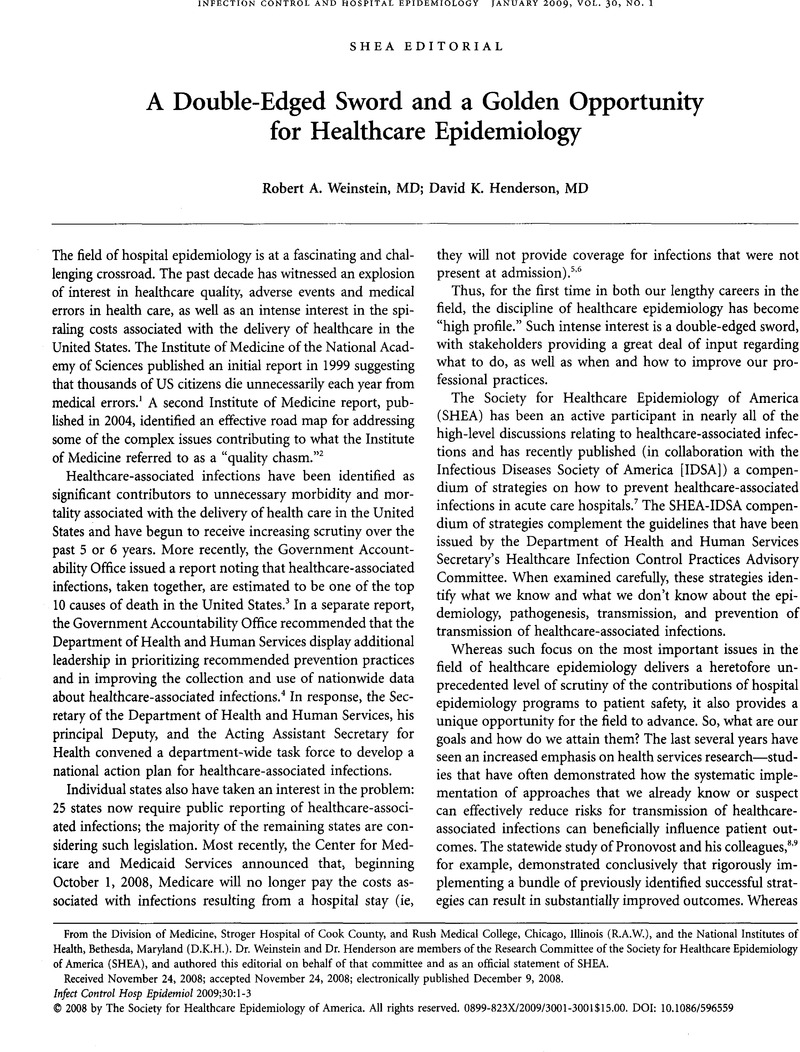Crossref Citations
This article has been cited by the following publications. This list is generated based on data provided by Crossref.
Palmore, Tara N.
and
Henderson, David K.
2010.
Testing the tube: Assessing silver as a potential “silver bullet” for preventing ventilator-associated pneumonia*.
Critical Care Medicine,
Vol. 38,
Issue. 4,
p.
1220.
Manning, Mary Lou
2010.
Expanding infection preventionists’ influence in the 21st Century: Looking back to move forward.
American Journal of Infection Control,
Vol. 38,
Issue. 10,
p.
778.
Palmore, T. N.
and
Henderson, D. K.
2013.
Managing Transmission of Carbapenem-Resistant Enterobacteriaceae in Healthcare Settings: A View From the Trenches.
Clinical Infectious Diseases,
Vol. 57,
Issue. 11,
p.
1593.
Buick, S.
Joffe, A. M.
Taylor, G.
and
Conly, J.
2014.
A Consensus Development Conference Model for Establishing Health Policy for Surveillance and Screening of Antimicrobial-Resistant Organisms.
Clinical Infectious Diseases,





